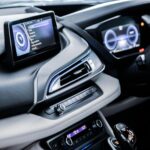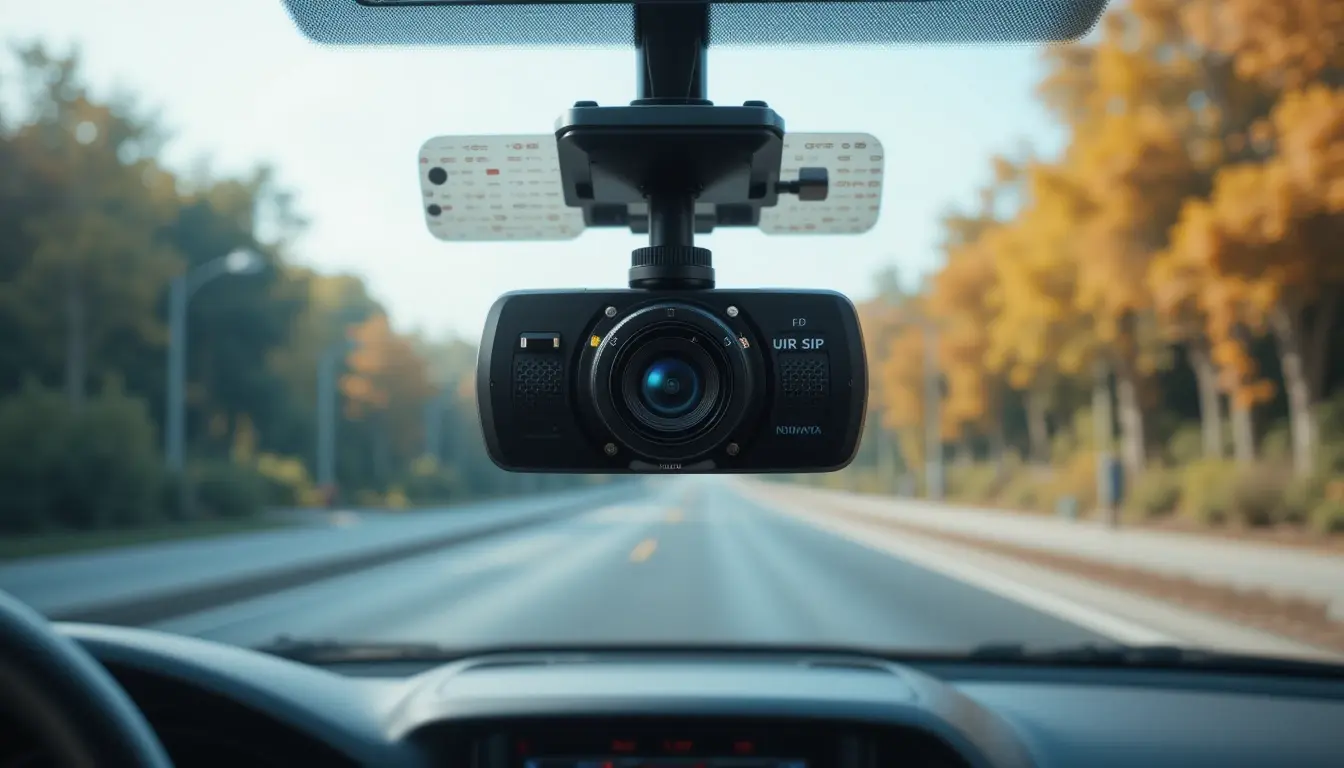Introduction
Are you feeling overwhelmed by the sheer number of dash cams on the market uncertain which features are essential, what specs to prioritize, or how difficult installation might be? You’re not alone. The road is full of unpredictability minor fender benders, fraudulent claims, hit and runs, and even road rage incidents. In today’s driving environment, having a reliable dash cam isn’t just a tech upgrade it’s a practical necessity. A discreet eyewitness in your car can provide undeniable proof when it matters most, saving you from unnecessary stress, disputes, and financial setbacks.
This no nonsense buying guide is here to help you cut through the noise. Whether you’re a first-time buyer or looking to upgrade, we’ll break down complex terms, compare key features, and show you exactly what to look for based on real-world driving situations and your specific needs.
By the time you reach the end, you’ll not only understand what makes a dash cam worth your investment but you’ll be fully equipped to select, install, and use one confidently. From protecting your insurance premiums to ensuring legal peace of mind, the right dash cam will have your back mile after mile.
Why a Dash Cam is Essential Today: Your Digital Witness & Insurance Ally
Beyond Basic Protection: The Modern Necessity
Gone are the days when dash cams were niche gadgets reserved for tech enthusiasts or professional drivers. In today’s unpredictable driving environment, dash cams have evolved into vital safety tools serving as an impartial digital witness, an insurance ally, and even a theft deterrent. Their growing adoption is not just a trend, but a response to real-world driving anxieties and rising awareness around personal liability and protection.
Modern drivers aren’t just thinking about collisions they’re proactively addressing risks like road rage incidents, insurance fraud, and hit and runs. A high-quality dash cam can be your silent advocate when it matters most backing your word with time stamped, irrefutable video evidence.
A Smart Solution to Real World Problems
Let’s face it accidents happen, and not always fairly. Dash cams offer a layer of protection far beyond what mirrors or your own memory can provide. Here’s how:
Accident Evidence
In the aftermath of an accident, emotions run high and stories can quickly conflict. Dash cam footage provides objective clarity, recording exactly what happened, from multiple angles if needed. This can be invaluable in insurance claims, traffic disputes, or even court proceedings.
Expert Tip: Look for dash cams that log GPS data, including speed and location. Combined with video, this becomes powerful, legally admissible evidence.
Protection Against Fraud & Road Rage
“Crash for cash” scams and aggressive drivers are more common than ever. A dash cam acts as both a deterrent and a shield, capturing critical proof when someone tries to manipulate a situation for personal gain.
Insurance Advantages
Many insurers now recognize the value of dash cams. Some offer discounts on premiums, while others are more likely to fast track claims when video evidence is available. However, policies vary so it pays to check with your provider on how they handle dash cam footage.
Insider Insight: Some insurers view dash cam footage as neutral third party evidence, especially when timestamped and GPS verified, giving you a stronger footing during investigations.
Peace of Mind on the Road
Knowing your drive is being recorded provides a surprising sense of calm. Whether you’re a daily commuter, a parent with a teen driver, or someone who travels frequently, a dash cam offers constant, unbiased protection.
Monitor Driving Habits
Dash cams aren’t just for accidents, they’re also great tools for coaching new drivers, evaluating fleet performance, or reviewing your own driving behavior for improvements.
Deterrent for Theft & Vandalism
Advanced dash cams with parking mode and motion sensors can keep watch even when your engine is off. This is especially useful in public or poorly lit areas, acting as a visible deterrent and post incident recorder.
Capture Scenic Drives
Not every use case is about safety. Some drivers love recording beautiful drives on coastal highways, mountain passes, or city lights. A dash cam lets you relive and share these moments with friends or family.
The Problem Solver’s Guide to Driving Anxieties
Ultimately, a dash cam isn’t just a camera; it’s your problem solver on the road. It addresses a wide range of common concerns:
- “What if someone hits my car and drives off?”
- “How can I prove it wasn’t my fault?”
- “Will I be blamed for something I didn’t do?”
- “What happens if my parked car gets scratched or broken into?”
This guide is designed to equip you with the knowledge to choose a dash cam that not only solves these problems but also helps you drive with confidence, park with peace of mind, and protect what matters most.
Demystifying Dash Cam Types & Configurations
Understanding Dash Cam Basics: What They Are & How They Work
At its core, a dash cam is a compact in car camera system designed to record real time footage of your drive. But beneath its simple appearance is a smart blend of technology working together to capture clear, reliable video when it matters most.
Let’s break down the core components:
- Lens captures the video. A wider angle (typically 140°–170°) covers more of the road, including adjacent lanes.
- Image Sensor determines how well the camera performs in different lighting. Look for sensors like Sony STARVIS for better night vision clarity.
- Processor Powers the dash cam’s features, including motion detection, GPS logging, and video encoding.
- Storage (MicroSD) Video footage is saved on a memory card. Most dash cams use loop recording, meaning old footage is automatically overwritten when storage fills up so you never have to delete files manually.
- Power Supply: Typically via your car’s 12V socket or hardwired to the fuse box. Some models also include built-in batteries or capacitors to save footage after the car is turned off.
Expert Insight: Dash cams with capacitors are more heat resistant, ideal for hot climates or long term durability.
Types of Dash Cams: Choosing Your Configuration
Not all dash cams are created equal. Your choice depends on how much coverage you need, your budget, and your driving habits. Below are the three main types of dash cam setups, each with distinct use cases.
Front-Only Dash Cams
Best for: Daily commuters, solo drivers, and budget conscious buyers who want basic protection.
A front only dash cam records what’s happening in front of your vehicle, which is where most incidents occur. It’s a great entry level option for those looking for affordable peace of mind.
Recommended For:
Drivers new to dash cams
People who park in secure or private areas
Those focused on the budget over full coverage
Product Recommendation: Front Only Dash Cams are Ideal for essential, straightforward protection.
Front and Rear Dash Cams
Best for: Drivers seeking complete forward and rear protection especially useful for tailgating or rear end accidents.
This configuration includes two cameras: one faces forward, and the second mounts on the rear windshield to record traffic behind you. Some models also provide rear camera night vision, enhancing protection during overnight parking.
Recommended For:
Urban drivers or those frequently in traffic
Anyone concerned about rear-end liability
Owners of newer vehicles, where rear damage can be costly
Product Recommendation: Front and Rear Dash Cams Excellent for drivers seeking full coverage without overcomplicating setup.
3 Channel Dash Cams (Front + Rear + Interior)
Best for: Rideshare drivers, fleet operators, or parents monitoring new drivers. These dash cams record the front road view, the rear, and the vehicle’s interior all at once.
Perfect for:
- Uber/Lyft/Didi drivers who need to document in cabin behavior
- Delivery drivers who want coverage while parked or making stops
- Fleet managers tracking driver conduct
- Parents want visibility into how teens handle the road
Recommended For:
Rideshare/delivery drivers
Business vehicle owners
Safety conscious parents
Product Recommendation: 3 Channel Dash Cams. A complete 360 degree safety net, ideal for commercial or high risk driving scenarios.
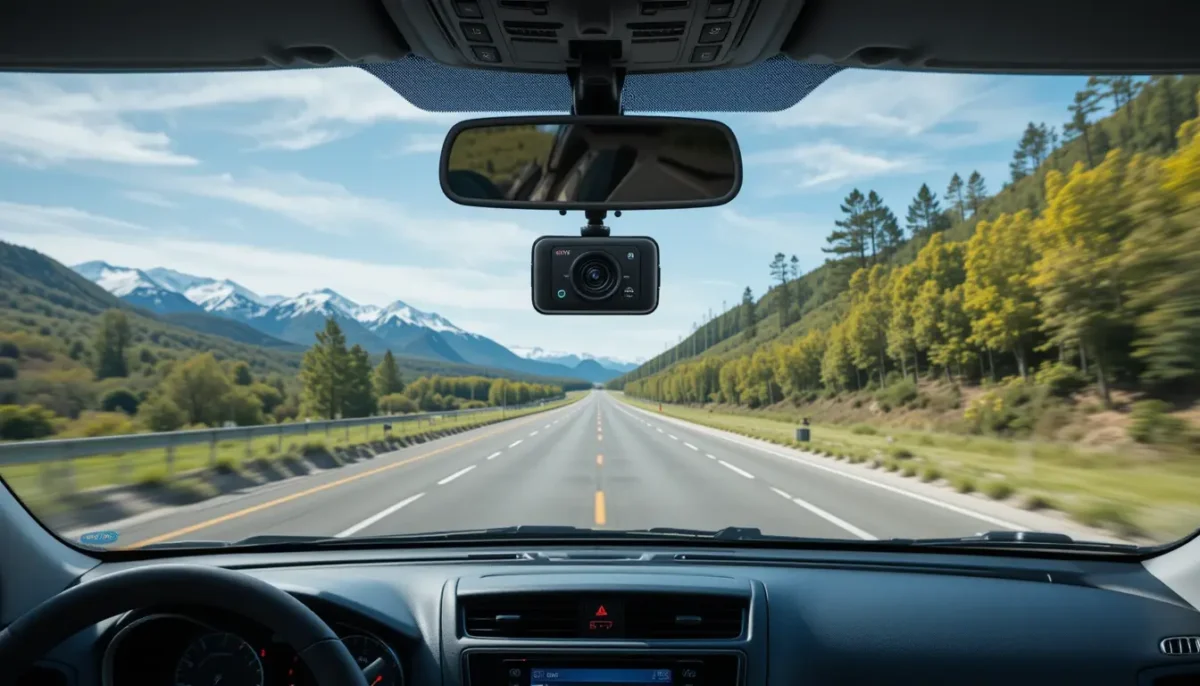
Essential Features for Your Dash Cam: A Deep Dive
Choosing the right dash cam isn’t just about picking the most expensive or feature packed model; it’s about knowing which features truly matter for your driving style, climate, and safety concerns. In this section, we’ll walk you through the must have features, explain the technical aspects in plain language, and offer expert backed tips to help you make a confident, informed decision.
Video Quality: Resolution & Frame Rate
Resolution determines how detailed your footage will be, especially important when trying to capture license plates or road signs.
- 1080p Full HD is A practical standard for most drivers. It offers a solid balance between clarity and file size.
- 1440p (2K) provides sharper image quality, making license plates more readable from a distance.
- 4K UHD Offers superior detail and future-proof footage, but requires more storage and processing power.
Frame Rate (FPS) controls how smooth the video appears.
- 30FPS is the minimum for usable, consistent footage.
- 60FPS delivers smoother video, which can make it easier to analyze fast-moving scenes like sudden collisions or swerving.
Expert Tip: Unless you need ultra-high detail, 1080p at 30FPS is often enough. If your budget allows, go for higher FPS before jumping to 4K.
Differentiation Opportunity: Include sample clips comparing 1080p vs. 4K, and day vs. night to help buyers visualize the difference.
Field of View (FOV): Capturing More of the Road
A dash cam’s field of view refers to how much of the road (and surroundings) it captures.
- Typical FOV ranges from 140° to 170°.
- A wider angle captures more, including adjacent lanes.
- Be cautious ultra wide angles can cause fisheye distortion, making footage harder to interpret.
Best Practice: Aim for a balanced lens wide enough for context but not so wide that it distorts details.
Parking Mode & G-Sensor: 24/7 Surveillance
Your car doesn’t stop being vulnerable when parked. Modern dash cams offer round the clock monitoring to keep your vehicle safe even when you’re not around.
G-Sensor:
- Detects impacts or sudden movement.
- Triggers recording and locks the footage so it won’t be overwritten.
Motion Detection:
- Starts recording when it senses motion around your vehicle.
Buffered Recording:
- Captures a few seconds before and after an event, giving you the full picture, not just the aftermath.
Expert Tip: “Parking mode” isn’t one size fits all. Look for buffered or motion detection parking modes for best protection.
Also, check whether the feature requires hardwiring or if the dash cam includes a built in battery.
Product Recommendation: Dash Cams with Advanced Parking Mode. Ideal for 24/7 surveillance and protection from hit and runs or vandalism.
Power Source: Capacitor vs. Battery
While many dash cams look the same on the outside, what powers them can make a huge difference in long-term performance.
- Capacitor-powered dash cams:
- Handle heat better, perfect for hot climates.
- Have a longer lifespan and a better safety record.
- Preferred for professional or frequent use.
- Battery-powered dash cams:
- More common in budget models.
- It can degrade over time, especially in hot weather.
Capacitors are specifically designed for high temperature environments. They also pose less risk of swelling or leaking over time compared to lithium-ion batteries.
Product Recommendation: Dash Cams with Capacitor Power. A smart investment for durability, especially in extreme weather.
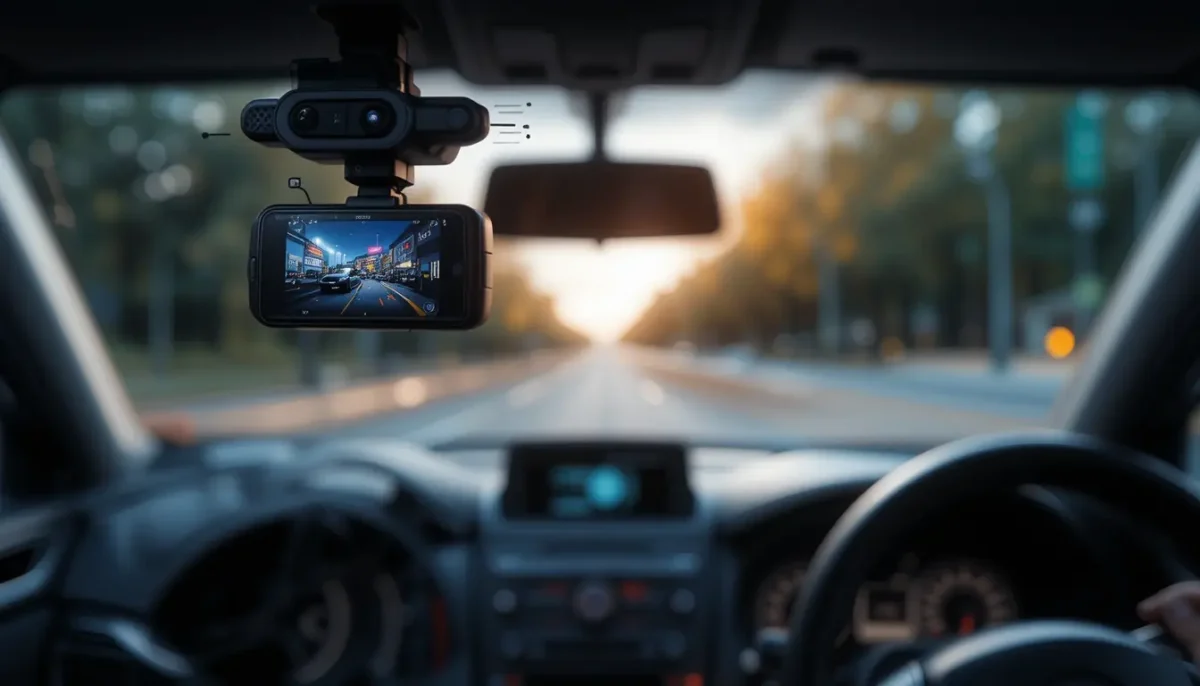
GPS & WiFi / Cloud Connectivity
GPS:
- Logs your speed and location data along with video footage.
- Essential for validating insurance claims or verifying exact crash coordinates.
WiFi:
- Allows easy file transfer and dash cam control from your smartphone.
- No need to remove the MicroSD card.
Cloud Connectivity:
- Premium feature for remote access and automated backups.
- Useful for fleet owners or anyone wanting off site video storage in case the dash cam is stolen or damaged.
Expert Tip: GPS data + footage = solid evidence.
WiFi and cloud features make your dash cam significantly more convenient for daily use.
Product Recommendation:
- Dash Cams with GPS for location and speed tracking.
- Dash Cams with WiFi & Cloud Access, for seamless footage transfer and remote viewing.
Wide Dynamic Range (WDR) / High Dynamic Range (HDR)
These image processing technologies are essential for maintaining video clarity in challenging lighting conditions like when driving at night, during sunrise/sunset, or under bright streetlights.
- They help balance dark shadows and bright glare, ensuring critical details aren’t lost.
Expert Tip: Features like WDR/HDR dramatically improve night footage and help avoid overexposed or underexposed scenes, especially important in areas with mixed lighting, like tunnels or parking lots.
Storage & Loop Recording
Dash cams rely on loop recording to manage limited storage space efficiently. This means the camera will overwrite the oldest, unlocked footage once the memory is full.
But your MicroSD card matters just as much as the camera itself:
- Standard SD cards aren’t built for continuous video writing.
- High Endurance MicroSD Cards are designed for dash cams; they last longer and offer more reliable recording.
Expert Tip: Never skimp on the SD card. Always choose one labeled “High Endurance” or “for Dash Cams” to avoid data corruption or failure when you need it most.
Product Recommendation: High Endurance MicroSD Cards, an essential companion for reliable, long term dash cam performance.
This deep dive into essential features puts you in the driver’s seat, armed with technical knowledge and real-world insight. In the next section, we’ll walk you through how to install and set up your dash cam, ensuring you get the most out of your investment from day one.
Understanding Dash Cam Terminology: A Quick Reference (Glossary)
Not sure what terms like G-sensor, WDR, or loop recording really mean? You’re not alone. Dash cam jargon can feel overwhelming, but understanding these terms is essential to making an informed purchase. Use this quick glossary to get up to speed fast.
Essential Dash Cam Terms Explained
- G-Sensor (Gravity Sensor)
Detects sudden movements or impacts (like a collision) and automatically locks the footage, preventing it from being overwritten. - Loop Recording
A system that automatically overwrites the oldest, unlocked video files once your memory card is full, ensuring continuous recording without manual management. - WDR / HDR (Wide / High Dynamic Range)
Enhances video quality in high contrast or low light environments by balancing overly bright or dark areas, crucial for night driving or tunnels. - Capacitor
A type of power supply used in place of traditional batteries. Capacitors are more heat resistant and longer lasting, especially in extreme weather conditions. - Parking Mode
Enables your dash cam to monitor your car while parked, usually through motion detection, impact detection, or time lapse recording. May require hardwiring for full functionality. - FPS (Frames Per Second)
The number of individual images captured per second in a video. 30FPS is standard for smooth playback; 60FPS provides even clearer motion. - FOV (Field of View)
The width of the area recorded by your camera. A wider FOV (e.g., 160°) captures more of the road but may introduce some lens distortion. - Hardwiring
A permanent power setup where the dash cam is connected directly to your car’s fuse box. This enables parking mode and 24/7 monitoring, even when the engine is off. - CPL Filter (Circular Polarizing Lens Filter)
An add on filter that reduces glare and reflections from windshields and dashboards, improving image clarity especially in bright conditions. - ADAS (Advanced Driver Assistance Systems)
Features that provide real-time alerts, such as lane departure warnings, forward collision warnings, or drowsy driving detection. Found in advanced or premium dash cams. - Event File
A protected video clip is saved when the G sensor is triggered or a manual save button is pressed. These files are not overwritten by loop recording. - H.264 / H.265 (Video Compression Codecs)
Methods used to compress video files without losing quality.- H.264 is more common and widely supported.
- H.265 provides better compression, meaning smaller file sizes and longer recordings but may require compatible playback devices.
This glossary can serve as a quick reference tool while comparing models or reading product specs. When you’re familiar with these terms, you’re less likely to be misled by flashy marketing and more likely to choose a dash cam that genuinely fits your needs.
Getting Started: Installation, Power, & Maintenance
Installing your dash cam correctly is just as important as choosing the right one. A poorly mounted or misconfigured camera can leave you with blurry footage or missed moments when it matters most. Fortunately, getting set up doesn’t require professional skills, just a little patience, attention to detail, and this guide.
Installation & Setup Tips: Getting Started
Mounting the Dash Cam
The best place to install your dash cam is just behind the rearview mirror, slightly offset to the passenger side. This spot provides:
- A clear, centered view of the road
- Minimal windshield obstruction
- Clean, discreet positioning for interior aesthetics
Pro Tip: Avoid placing the cam where windshield wipers don’t reach dirt or fog can obstruct footage.
Power Options: How Your Dash Cam Stays On
1. Cigarette Lighter Adapter
- Plug and play setup just connect and go.
- Powers on only when the car is running.
- Ideal for beginners or casual users.
2. Hardwiring Kit
- Connects the dash cam directly to your car’s fuse box.
- Enables continuous power, even when the engine is off, critical for full featured parking mode.
- Offers a cleaner, wire free look inside your cabin.
Expert Tip:
Hardwiring isn’t as intimidating as it sounds, especially with pre wired kits. But if you’re not comfortable tapping into your fuse box, a quick visit to an auto shop might be worth it.
Cable Management: Keeping It Neat
Use the following steps to conceal and secure your cables:
- Tuck the power cable into the headliner (the fabric at the top of your windshield).
- Route it down the A pillar (the vertical frame next to your windshield).
- Continue toward your glove compartment or fuse box, depending on power type.
A tidy cable setup not only looks better it also prevents distractions or safety hazards.
Differentiation Tip: DIY Setup Difficulty Ratings
- Plug and Play (Cigarette Adapter): Easy ~5 to 10 minutes
- Hardwiring Kit: Intermediate ~30–60 minutes (requires basic tools & vehicle knowledge)
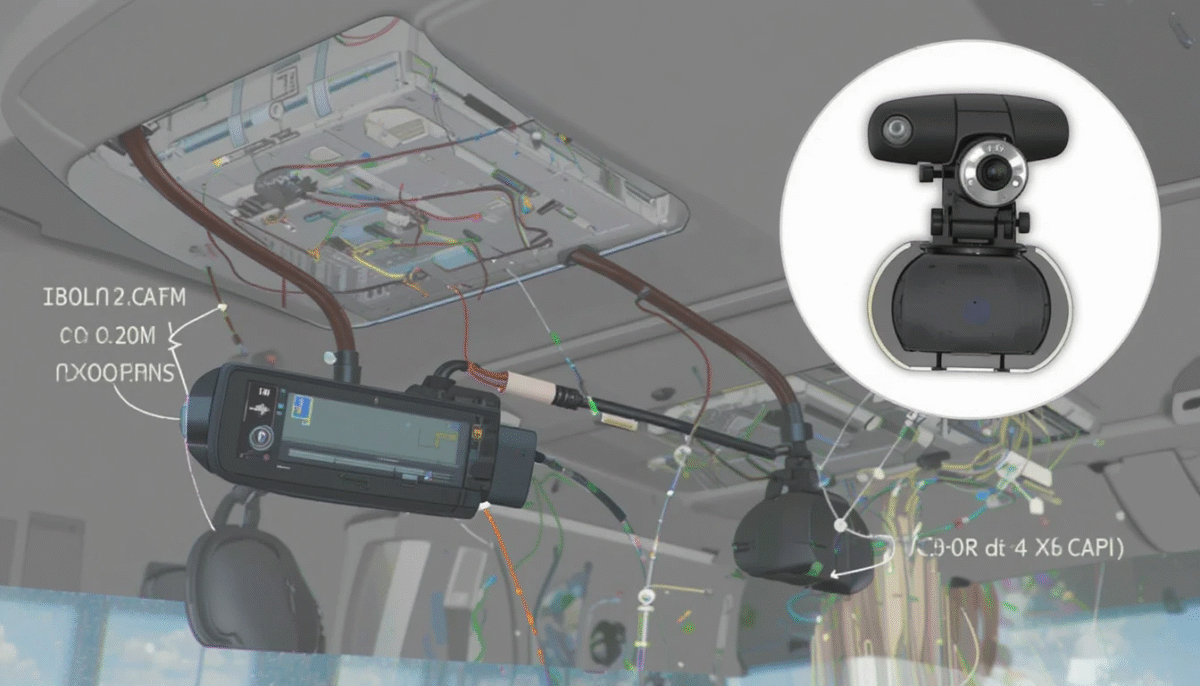
Maintenance & Troubleshooting Quick Guide
Your dash cam is like any other piece of tech; it needs occasional upkeep to stay reliable.
1. Regularly Format Your SD Card
- Over time, loop recording can lead to file corruption or data errors.
- Manually format your MicroSD card every 2 to 4 weeks using the dash cam’s built in format tool or your computer.
Expert Tip: Set a monthly reminder. Some dash cams offer auto format settings. Use them if available.
2. Clean the Lens
- A dirty or smudged lens can ruin even the best footage.
- Use a microfiber cloth and lens cleaner (or gentle screen cleaner) monthly.
3. Update Firmware
- Manufacturers regularly release firmware updates to improve features, fix bugs, or enhance stability.
- Check the official website or companion app every few months.
Common Troubleshooting Tips
| Problem | Possible Fix |
| Camera not recording | Check if the SD card is inserted properly or try replacing it. Confirm power source. |
| Freezing or crashing | Format SD card, update firmware, or perform a factory reset. |
| Poor video quality | Clean the lens, check video resolution settings, and enable WDR/HDR if available. |
Expert Tip:
Don’t wait for an incident to check your camera. Test your dash cam weekly to ensure it’s recording properly, the lens is clean, and the angle hasn’t shifted.
With the right setup and regular upkeep, your dash cam will serve as a reliable, around the clock guardian ready to record when it counts.
The Legal & Insurance Landscape: Your Dash Cam as Evidence
Dash cams aren’t just silent observers; they’re powerful allies in both the courtroom and the insurance office. But with that power comes responsibility. Understanding the legal and insurance implications of dash cam usage can help you make the most of your footage without crossing any legal lines.
Legal & Insurance Implications of Dash Cam Footage
Admissibility in Court: A Trusted Digital Witness
In many jurisdictions, dash cam footage is admissible as evidence in legal proceedings, whether you’re defending yourself against a traffic violation or seeking justice in a collision. Because dash cams record in real-time and often include GPS data and timestamps, their footage is generally considered objective and reliable.
Courts often view dash cam video as a third party, unbiased witness, especially when it clearly shows events leading up to a crash or altercation.
However, admissibility may depend on:
- Video clarity and continuity
- Whether it was legally recorded (see privacy laws below)
- Tampering or editing concerns
Insurance Claims: Proving Fault, Speeding Up Decisions
For insurance companies, dash cam footage can be a game changer. It provides clear, time stamped visual evidence that helps adjusters:
- Determine fault more accurately
- Resolve claims faster
- Avoid costly litigation
Some insurers are now offering:
- Premium discounts for dash cam users
- Faster claims processing when footage is submitted
- Favorable dispute resolution based on clear recordings
Industry Insight: According to Allianz Insurance, dash cam footage is “increasingly being used to help speed up claim settlements” and “reduce fraudulent claims
Privacy Considerations: What You Need to Kno
While recording the road ahead is generally legal, privacy laws can vary by country, state, or province, especially when it comes to:
- Audio recording of conversations inside the vehicle
- Recording in private areas, such as gated properties or private driveways
- Camera placement that could obstruct the driver’s view (against road safety laws)
For example:
- In the UK, dash cams are legal, but you must inform passengers if recording inside the vehicle.
- In Germany, strict privacy laws may limit where and how you use dash cam footage.
- In many U.S. states, two-party consent is required for audio recording.
Expert Tip:
Always check local laws before using or submitting dash cam footage. Some regions may require specific camera placements, consent notices, or restrictions on audio capture. Ignorance could lead to fines—or your footage being thrown out.
Your Dash Cam as a Legal and Insurance Ally
Think of your dash cam as more than a recording device. It’s your digital witness, one that never forgets details, doesn’t take sides, and speaks with visual proof.
Here’s how it supports you:
| Use Case | Real-World Benefit |
| Accident Disputes | Clear evidence of who was at fault |
| Fraudulent Claims | Protection from “crash-for-cash” schemes |
| Insurance Negotiations | Faster, smoother claim approvals |
| Road Rage or Harassment Incidents | Visual proof of threats, aggressive driving, or damage |
| Legal Defense | Admissible evidence in traffic court or legal proceedings |
:
- UK: gov.uk – Dash cams and the law
- USA: NHTSA guidelines
- Germany: GDPR implications on dash cams
A dash cam is not just an accessory, it’s a vital part of your legal and financial toolkit. Used responsibly, it can protect your license, your money, and your peace of mind.
Budgeting for Your Digital Witness: Value at Every Price Point
Investing in a dash cam doesn’t mean draining your wallet. With the right information, you can find a model that matches both your budget and your needs, whether you’re a casual commuter, a rideshare driver, or a safety-first parent. This breakdown helps you understand what to expect at each price tier, so you can spend wisely and confidently.
Budget Dash Cams (Under $100)
Best for: First-time buyers, light daily drivers, or those needing basic protection.
What You’ll Get:
- 1080p Full HD resolution (adequate for front-view recording)
- Loop recording to overwrite old footage automatically
- G-sensor to detect and lock video during sudden impacts
- Basic plug and play installation via the cigarette lighter
What You’ll Miss:
- Weak or absent parking mode
- Basic or no night vision (struggles in low light)
- Lower durability battery powered models are prone to failure in heat
Trade Off Tip: Budget models do the job for daytime driving and essential protection, but aren’t ideal for frequent night use or parked surveillance.
Mid Range Dash Cams ($100 – $250)
Best for: Daily commuters, families, or safety conscious drivers seeking a feature rich yet affordable option.
What You’ll Get:
- 1080p or 1440p (2K) resolution with better video clarity
- More stable parking mode (often motion-triggered or buffered)
- WiFi for viewing footage on your smartphone
- Built in GPS to log speed and location
- Capacitor based power in some models for better heat resistance
- Wider Field of View and improved WDR/HDR for night driving
Value Sweet Spot: Most drivers find the best balance of price and protection in this range, suitable for everything from routine commutes to long road trips.
Premium Dash Cams ($250 and up)
Best for: Fleet operators, professional drivers, tech enthusiasts, or anyone who wants maximum protection.
What You’ll Get:
- 4K ultra HD resolution for unmatched detail
- Advanced ADAS (Advanced Driver Assistance Systems) like lane departure or collision warnings
- Cloud connectivity for remote access and automatic backups
- Three channel coverage (front, rear, interior)
- Enhanced night vision, using Sony STARVIS sensors or better
- High end capacitors for long-term durability
- Full featured buffered parking mode, often with hardwiring support
Premium Justified: You’re not just buying a camera, you’re investing in a high performance digital co pilot that watches over you in all conditions.
What Features Are Worth the Extra Spend?
| Feature | Budget (<$100) | Mid-Range ($100–$250) | Premium ($250+) | Best For |
| 1080p Resolution | ✅ | ✅ | ✅ | All drivers |
| 1440p / 4K Video | ❌ | ✅ (2K) | ✅ (4K) | Detail-focused drivers, rideshare use |
| GPS Logging | ❌ | ✅ | ✅ | Legal disputes, insurance evidence |
| Reliable Parking Mode | ❌ | ✅ | ✅ | City drivers, vandalism protection |
| Wi-Fi/App Control | ❌ | ✅ | ✅ | Convenience, tech-friendly users |
| Cloud Backup | ❌ | ❌ | ✅ | Fleet tracking, remote access |
| ADAS Warnings | ❌ | ❌ | ✅ | Safety-first users, long-haul drivers |
| Capacitor Power Supply | ❌ | ✅ (some) | ✅ | Hot climates, long-term use |
Smart Buyer Tip: Match Your Dash Cam to Your Profile
- Budget Driver: Wants essential road recording for peace of mind
- Family Vehicle Owner: Needs dual-channel coverage, parking mode, and app access
- Professional / Rideshare Driver: Demands three channel, cloud backup, and GPS logging
- Tech Savvy Driver: Prioritizes 4K clarity, ADAS features, and cloud integration
No matter your budget, there’s a dash cam out there that can meet your needs and deliver genuine value. The key is knowing which features matter most to you—and which ones are worth the extra investment.
Dash Cam Comparison Table: Key Features at a Glance
| Feature / Category | Description | Importance | Considerations | Best Use Case |
| Front Only Dash Cam | Records footage only from the front of the vehicle. | Basic protection for front end incidents. | Simplest installation. Budget friendly. Limited coverage (no rear or cabin view). | First time buyers, budget conscious users |
| Front & Rear Dash Cam | Records simultaneously from the front and rear. | Comprehensive coverage for all around protection. | Slightly more complex setup. Cabling required for the rear camera. Essential for rear-end collisions. | Commuters, families, and everyday drivers |
| 3 Channel Dash Cam | Records the front, rear, and interior (cabin) of the vehicle. | Maximum protection inside and out. | Most complex install. Pricier. Needs more storage space. | Rideshare drivers, fleets, and parents monitoring new drivers |
| Video Resolution | Clarity of recorded footage (e.g., 1080p, 2K, 4K). | Higher res = clearer evidence (e.g., license plates, signs). | 4K requires more storage & processing. 1080p sufficient for many users. | Users needing fine detail, driving in high traffic areas |
| Parking Mode | Records while parked, triggered by motion or impact. | Protects from vandalism, hit and runs, theft. | Best with hardwiring. Buffered mode is preferred over basic motion detection. | Urban parkers, apartment dwellers, nighttime drivers |
| GPS | Logs speed and location data with video. | Adds legal context to footage, especially in disputes. | Slightly higher cost. May not be needed for casual use. | Insurance claims, legal disputes, and rideshare operators |
| WiFi Connectivity | Connects to smartphone via app for footage access & settings. | Convenient for reviewing/sharing videos without removing SD card. | Transfer speed may vary. Dependent on app quality. | Smartphone-savvy users, fleet supervisors |
| Cloud Connectivity | Automatically uploads footage to the cloud. | Offsite backup for ultimate data security. | Requires subscription. Higher price tier. | Fleet managers, frequent drivers, security focused users |
| Power Source (Capacitor vs. Battery) | Capacitor = heat resistant, long-lasting. Battery = common but weaker. | Affects reliability and safety, especially in extreme temperatures. | Capacitors are more durable, especially in hot or cold climates. Batteries may swell over time. | Hot climates, frequent drivers, premium buyers |
| Field of View (FOV) | Width of the area captured by the lens (e.g., 140°–170°). | Determines how much of the road is captured. | Wider FOV sees more lanes, but extreme angles may distort image. | Highway drivers, city traffic monitoring |
| Night Vision / Low-Light Performance | Enhances visibility in poor lighting using sensors like Sony STARVIS. | Critical for nighttime driving and parking. | Not all models perform equally well. Look for WDR/HDR or STARVIS. | Night shift drivers, 24/7 surveillance needs |
| Advanced Driver Assistance (ADAS) | Features like lane departure or collision warnings. | Adds an extra layer of safety through real time alerts. | Found in premium models. May require calibration. | Safety first, users, long haul, and elderly drivers |
| Storage Support & Loop Recording | Loop recording = overwrites the oldest footage. High endurance MicroSDs required. | Essential for uninterrupted recording. | Invest in high endurance SD cards. Some cams auto-format; others need manual formatting. | All users, especially those who drive daily |
This table empowers your readers to quickly compare and identify which dash cam features align with their budget, driving environment, and peace of mind goals.
Debunking Dash Cam Myths: Fact vs. Fiction
Dash cams have surged in popularity over the last decade, but with that growth has come a fair share of misinformation. From legal confusion to installation worries, many potential buyers are held back by outdated or inaccurate assumptions. Let’s set the record straight by addressing some of the most common myths about dash cams.
Myth #1: “Dash cams are illegal.”
Fact:
Dash cams are generally legal for personal use in most countries, including the U.S., UK, Canada, and Australia. However, laws vary when it comes to:
- Windshield obstruction (some areas restrict where devices can be mounted)
- Audio recording (often requires consent in two party consent states or countries)
- Interior recording (inform passengers if you’re capturing cabin footage)
Tip: Check your local traffic laws and privacy regulations to stay compliant.
Myth #2: “Dash cams will drain my car battery.”
Fact:
This is only a concern if the dash cam is poorly installed or lacks proper power safeguards.
- Modern dash cams with parking mode use low voltage cutoff circuits to shut down before draining the battery.
- Hardwired setups connected to a fuse box with battery protection are safe for long term use.
- Capacitor based models also reduce strain and perform better in hot climates.
Tip: Use a professional hardwiring kit with a voltage cutoff feature, or unplug when not in use.
Myth #3: “Dash cam footage isn’t admissible in court or for insurance.”
Fact:
Dash cam footage is commonly accepted as evidence in both legal and insurance settings.
- Most courts will consider video evidence relevant and objective, especially when it includes GPS data and timestamps.
- Insurance providers often use dash cam footage to speed up claims and determine fault more accurately.
- Some jurisdictions have minor restrictions (e.g., video tampering concerns), but these are exceptions, not the rule.
Tip: Ensure your footage is clear, time stamped, and unedited for maximum credibility.
Myth #4: “They’re too complicated to install.”
Fact:
Many dash cams today are designed for quick, user-friendly setup.
- Plug and play models can be installed in minutes using the cigarette lighter socket.
- Hardwiring kits, while more involved, come with step by step guides and fuse tap adapters. If you’re not comfortable doing it yourself, most local garages offer installation services.
Tip: Choose a camera with cable management tools and adhesive mounts for a clean look.
Myth #5: “Dash cams raise your insurance premiums.”
Fact:
The opposite is often true.
- Some insurers offer discounts for dash cam equipped vehicles.
- Footage that proves you’re not at fault can help you avoid premium hikes after an incident.
- Insurers appreciate dash cams for reducing fraud, speeding up claims, and providing reliable documentation.
Tip: Ask your provider if they offer dash cam discounts or have preferred models for claims assistance.
Final Takeaway: Knowledge Is Power
Don’t let myths steer you away from one of the most cost effective safety upgrades available for your vehicle. Dash cams are legal, accessible, affordable, and offer genuine peace of mind when it matters most.
Finding Your Perfect Match: Your Dash Cam Persona
Not all drivers are the same so why should all dash cams be? The best dash cam for you depends on your daily habits, priorities, and comfort with tech. This simplified “personality quiz” helps match your driving lifestyle with the ideal dash cam configuration.
Just answer this: Which description sounds most like you?
The Commuter
You drive to work daily and want protection for everyday driving scenarios without overcomplicating things.
What You Need:
- 1080p or 1440p resolution for clear daytime and nighttime footage
- Front only or front + rear cam for incident coverage
- Basic parking mode to monitor while you’re parked at the office or mall
- Capacitor power for durability in varying weather conditions
Why It Fits:
You need reliability and decent image quality, not bells and whistles. Think of it as a low maintenance digital co pilot.
Product Range: $100–$200
Pro Insight: Mid tier dash cams often hit the commuter sweet spot great value, minimal hassle.
The Family Protector
Your car often carries precious cargo. You prioritize full visibility, peace of mind, and user-friendly features.
What You Need:
- Front and rear cameras for complete coverage in both directions
- Buffered parking mode to protect from parking lot bumps or school pickup chaos
- Wide Dynamic Range (WDR) for clear footage in tunnels or glare
- Easy smartphone access for reviewing footage and sharing with insurers
Why It Fits:
You want a dependable witness without needing a tech manual to use it.
Product Range: $150–$250
Pro Insight: Look for models with intuitive mobile apps. You don’t want to be fumbling with buttons when time matters.
The Rideshare/Delivery Pro
You spend hours on the road, picking up passengers or dropping off packages, and every interaction matters.
What You Need:
- 3 channel dash cam (front, rear, and cabin/interior)
- GPS logging for speed/location data
- Cloud storage in case your car is damaged or footage needs to be recovered remotely
- Advanced parking mode for off hours protection
Why It Fits:
You’re not just a driver, you’re running a business from your vehicle. Your dash cam needs to protect you legally, financially, and physically.
Product Range: $200–$350+
Pro Insight: Prioritize models with IR (infrared) interior cameras for clear cabin recording at night.
The Budget Conscious Buyer
You want solid, basic protection without blowing your budget.
What You Need:
- Front only dash cam with 1080p resolution
- G-sensor to lock footage on impact
- Loop recording for continuous capture
- Cigarette lighter power (no hardwiring hassle)
Why It Fits:
You believe in value, not fluff. You just need reliable proof in case something goes wrong.
Product Range: Under $100
Pro Insight: Avoid ultra cheap off brand cams, look for budget options from reputable manufacturers with warranty support.
The Tech Enthusiast
You want it all: quality, features, and control. Driving is part of your identity, and your dash cam should reflect that.
What You Need:
- 4K ultra HD recording
- ADAS (lane departure, collision alerts)
- Cloud connectivity, WiFi, and app integration
- High end capacitor power, sleek design, and voice control (if available)
Why It Fits:
You don’t just want footage, you want insight, alerts, and data on demand.
Product Range: $300+
Pro Insight: Look for dash cams with Sony STARVIS sensors they deliver superior night vision and color accuracy.
Final Tip: There’s No “One Size Fits All”
Choosing the right dash cam is about protecting what matters most to you, whether that’s your family, your side hustle, or your budget. Once you know your persona, it becomes easier to filter out the noise and shop with confidence.
Conclusion: Drive Smarter, Drive Safer
In today’s unpredictable driving environment, a dash cam isn’t just a gadget; it’s a digital guardian, a trusted witness, and a smart long term investment.
Let’s quickly recap the essentials:
- Video resolution matters; choose clarity (1080p, 2K, or 4K) based on your detail needs and storage capacity.
- Parking mode is your silent watchdog; it keeps your car protected even when you’re away.
- Power source is critical; opt for capacitors over batteries for reliability, especially in extreme climates.
- Installation options vary; plug and play is perfect for simplicity, while hardwiring unlocks advanced features like 24/7 surveillance.
Turn Knowledge Into Confidence
Whether you’re a budget conscious commuter or a rideshare pro logging long hours, you now have the knowledge to make a smart, personalized decision.
Remember: The best dash cam isn’t the one with the longest feature list, it’s the one that fits your driving habits, lifestyle, and concerns.
Your dash cam should do one thing well: keep you informed and protected when it matters most.
Make the Move. Protect Your Drive.
Don’t wait for an accident, dispute, or moment of regret to realize the value of a dash cam. Investing in the right one today means:
- Faster insurance claims
- Protection against fraud or vandalism
- Safer driving for you and your passengers
- Priceless peace of mind
Now it’s your turn to use what you’ve learned in this guide to choose with clarity, install with confidence, and drive with the assurance that you’re never truly alone on the road.
Future Proofing Your Drive
Dash cam technology is evolving rapidly, bringing smarter AI features, real time alerts, cloud integration, and even driver assist functionality into the mainstream. By choosing a reliable, feature rich model today, you’re not just protecting the present, you’re future proofing your ride for years to come.
Ready to Take the Next Step?
Explore our Top Recommended Dash Cams by Budget & Persona
Or download the Complete Dash Cam Buying Guide as a shareable PDF
Your next journey deserves a companion that never blinks.
Drive smarter. Drive safer.

Muhammad Arshad is an automotive tech enthusiast and car safety expert with over 5 years of experience testing and reviewing vehicle accessories. At Parking-Sensor.co.uk, he helps drivers choose the right parking sensors, cameras, and smart driving aids to make every journey safer and stress-free.



